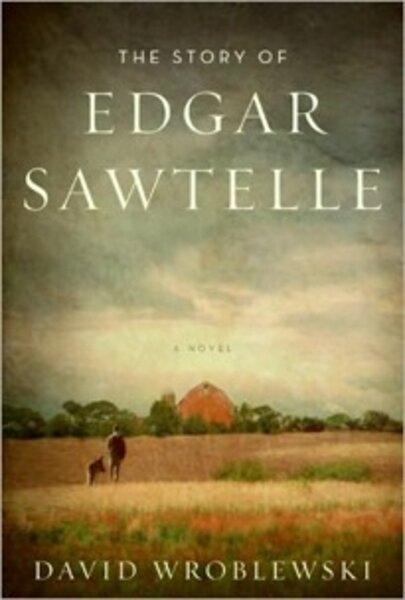A dog story for the ages
Loading...
I am completely smitten. The object of my newfound devotion is, alas, fictional. She’s a heroine of surpassing grace and faithfulness, equaled only by her intelligence and sense of smell. This paragon of virtue is named Almondine. And I should probably mention that she’s a dog.
Wait! Come back! Would it help if I promise that at no time does she break into song, perform a soft shoe, or crack wise about 1990s pop culture? Nor does she slurp spaghetti or battle the Red Baron. (I happen to find those last two traits endearing in a canine, but I understand some people grow weary of anthropomorphic animals.)
Almondine is all dog. Specifically, she is Edgar’s dog. And Edgar Sawtelle is the utterly disarming teenage hero at the center of David Wroblewski’s wonderful debut novel of the same name. Set on a small farm in rural Wisconsin, The Story of Edgar Sawtelle takes all kind of risks. The hero is mute, a few chapters are narrated from a dog’s point of view, and there are all kinds of ways the novel could have dissolved into a syrupy mess.
Instead, Wroblewski creates a tender coming-of-age story and grafts onto it a literary thriller with strong echoes of Shakespeare and “The Jungle Book.” The result is the most hauntingly impressive debut I’ve read all year.
Edgar grows up in a modest farmhouse, surrounded by his loving parents and several dozen dogs, which the family breeds and trains. (This isn’t the kind of training offered by the local PetSmart; it takes more than a year for them to teach the dogs how to communicate.)
The family business was started by his grandfather, who read the work of geneticist Gregor Mendel and spent his life trying to create a new breed of dog that was marked by its intelligence and humor.
“Your grandfather didn’t care about breeds. He always thought there was a better dog out there somewhere,” Gar, Edgar’s father, tells him. “The only place he was sure he wasn’t going to find it was in the show ring….” John Sawtelle also was very choosy about whom he would sell his dogs to and wasn’t above “rescuing” a dog if its new owners didn’t treat it properly. “Most of the time he just sent them a check and told them to get a beagle.” (Speaking as a beagle owner, ha!)
Almondine is the ultimate in “Sawtelles,” as the dogs are known. After Edgar’s birth, she takes on the job of being his voice and companion. Edgar can’t cry, so Almondine makes his needs known to his parents, licking his mom awake when the dog hears the baby’s faint huffing sound. (Edgar’s inability to speak is never explained; a little girl tells him her grandma “says that before you were born, God told you a secret he didn’t want anyone else to hear.”)
The companionship between Edgar and Almondine is beautifully written; anyone with memories of a beloved childhood pet will be charmed.
Into this Eden returns Edgar’s Uncle Claude, who’s got the family knack with animals but an unsettling manner about him. “Fixing the barn roof, it turned out, was a perfect job for Claude. It hadn’t taken long to see how ferociously solitary the man was. A day spent alone climbing the ladder and ripping tarpapered shingles from old planking left him whistling and jaunty…. He might have been earning his keep, but the barn roof was also a convenient surveyor’s point, a perch from which their entire, insular little kingdom was revealed.”
He and Edgar’s father have a falling-out, and it looks as if Claude is gone for good. Then Gar dies suddenly, and an overwhelmed Trudy turns to Claude for help with the kennel. The doctor diagnosed an aneurysm as cause of death, but 14-year-old Edgar becomes convinced that his uncle poisoned his father.
That’s about when a reader notices that Trudy tends to be a nickname for Gertrude and that Claude sounds an awful lot like Claudius. Egad – Edgar’s trapped in the plot of “Hamlet.” Run, kid, run! And he does, gathering up his pack and heading for the Canadian woods like a mid-century Mowgli.
Jane Smiley is obviously the most successful author to rewrite Shakespeare onto an American farm, but despite some superficial similarities with her Pulitzer Prize-winning 1991 novel “A Thousand Acres” “The Story of Edgar Sawtelle” reads like an entirely different breed. Wroblewski’s novel is a bit less of a remake, for one thing.
For another, I found “Edgar Sawtelle” more enjoyable on a personal level than “Acres.” After all, it’s hard for an English major not to be tickled by the idea of a mute Hamlet. (Plus, I just like “Hamlet” more than “King Lear.”) Edgar might be silent, but his story will echo with readers for a long time.
Dog lovers of the world, what are you waiting for? Fetch!
Yvonne Zipp regularly reviews fiction for the Monitor.






